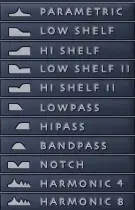R
RAMI
Guest
When I use a shelf on 250hz (for example) and cut it by 3db, am I cutting EVERYTHING under 250hz by 3db? Or am I cutting by 3db at 250hz, and then it tapers off until it's cutting only maybe 1db down at 60hz or whatever?
Thanx in advance.
Thanx in advance.



